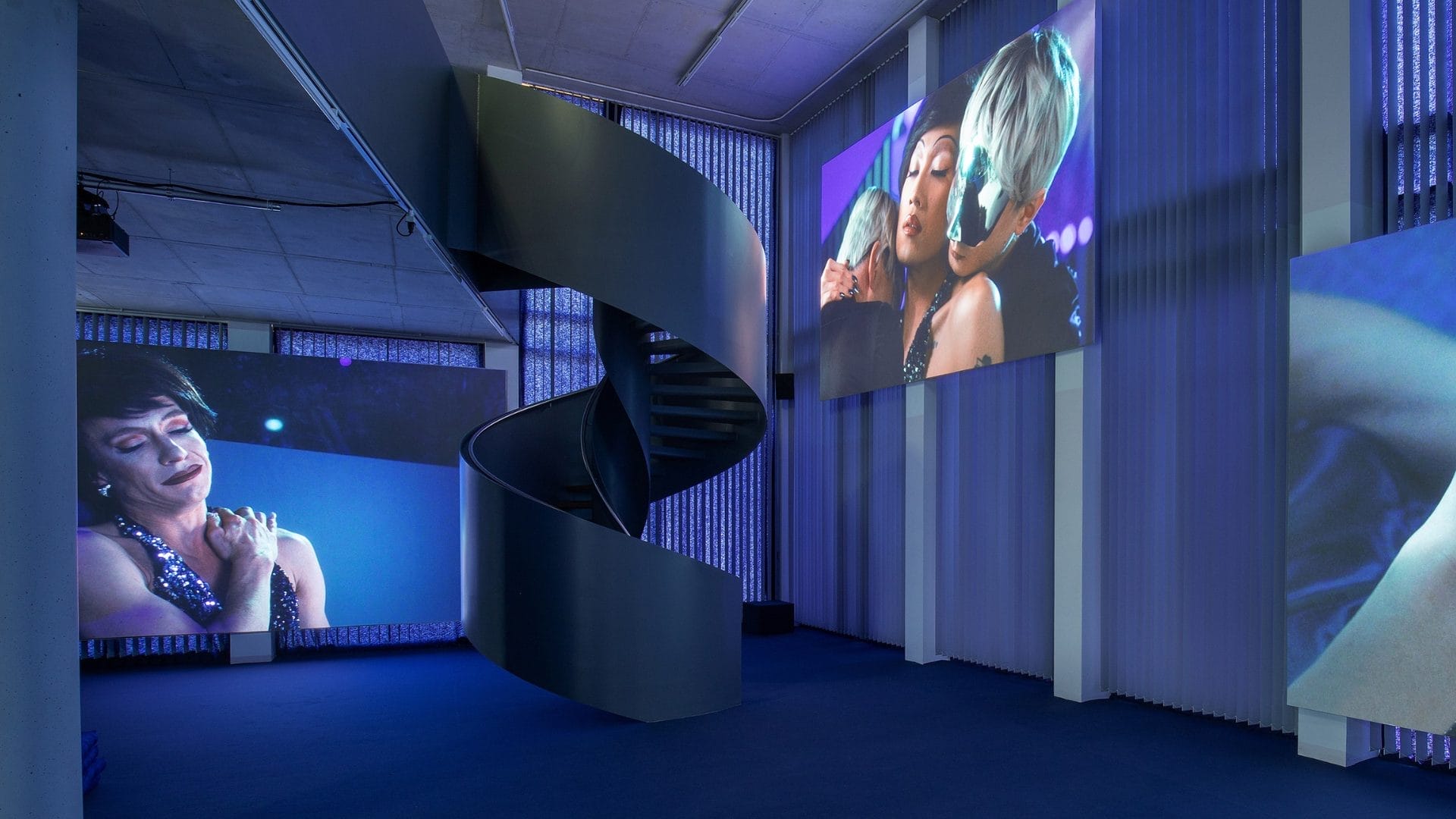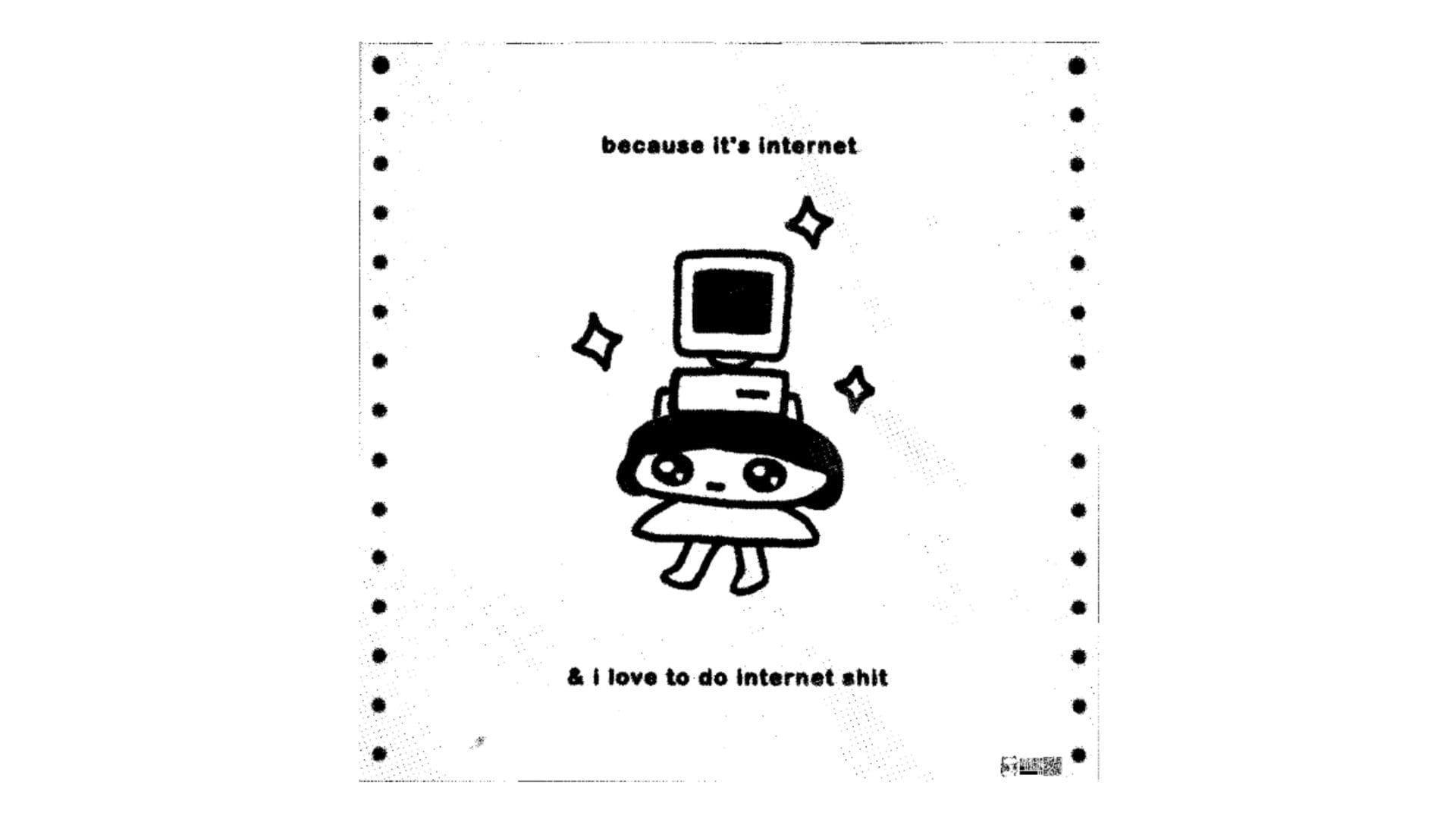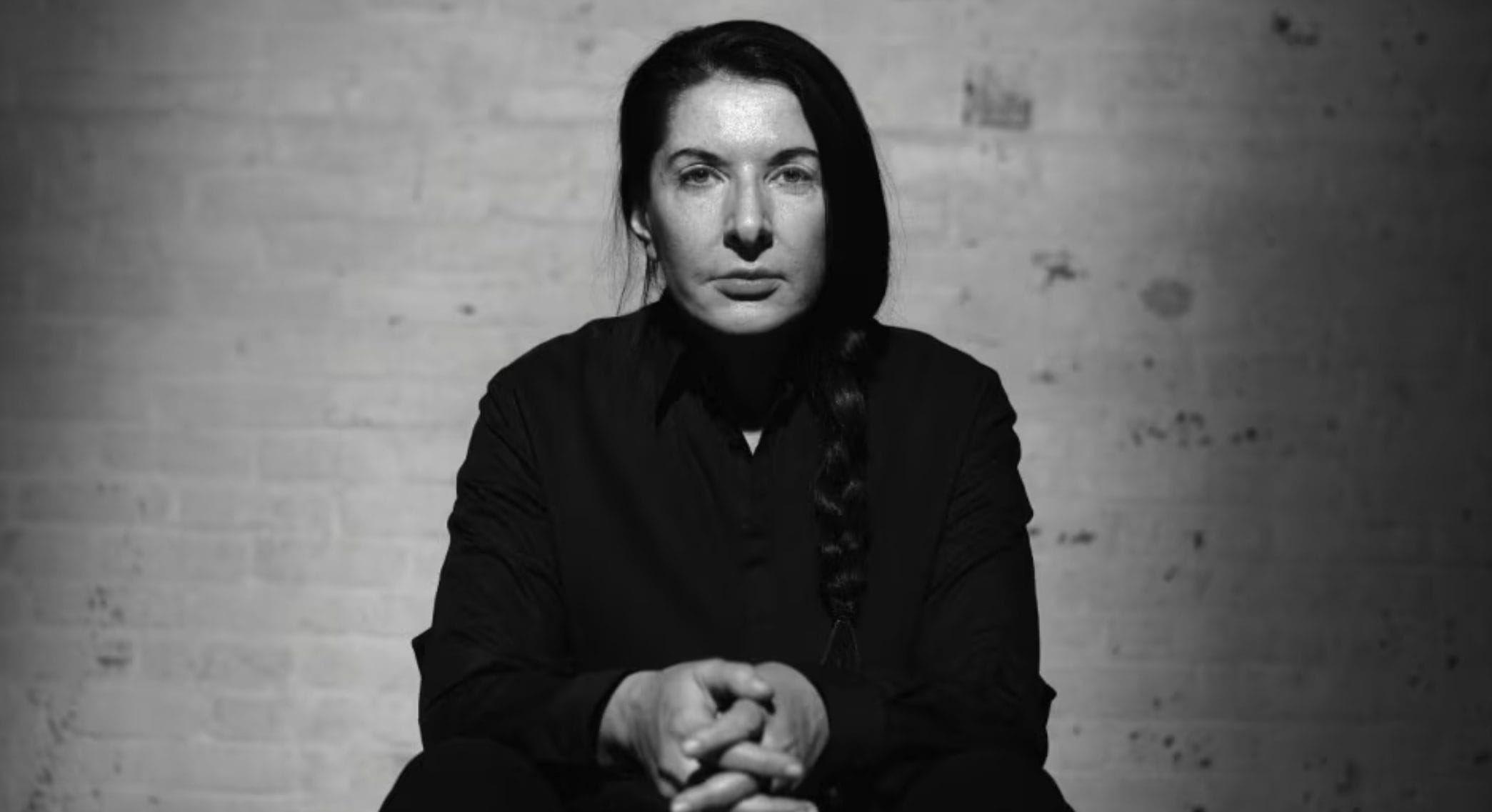
Marina Abramović at the Stedelijk Museum in Amsterdam
Echoes of Performance: The Marina Abramović Retrospective at the Stedelijk Museum
In the heart of Amsterdam, the Stedelijk Museum celebrates a historic connection with Marina Abramović through an exceptional retrospective. The exhibition, a result of close collaboration between the Stedelijk, the artist, and the Royal Academy of London, not only reflects on fifty years of the Serbian artist’s career but also highlights the ongoing dialogue and experimentation that characterize her work.
This exhibition is one of the most comprehensive ever mounted on Abramović, including recordings of legendary actions, photographs, videos, and sculptures, as well as live reenactments of four of her most iconic performances performed for the first time in the Netherlands. Among these, “Art Must Be Beautiful, Artist Must Be Beautiful” (1975), “Imponderabilia” (in collaboration with Ulay, 1977), “Luminosity” (1997), and “The House with the Ocean View” (2002). In addition to these famous works, the audience will have the unique opportunity to actively participate in two performances: “Work Relation” (with Ulay, 1978) and “Counting the Rice” according to the Abramović Method.
Featuring over sixty works that trace the path of the multi-award-winning performance pioneer, whose artistic engagement began half a century ago, the exhibition promises to be a deep immersion into Abramović’s creative journey. The Stedelijk is not just a mere exhibition space; it becomes a place of sensory and emotional experience, where visitors can explore the boundaries of the human condition through Abramović’s art, witnessing the evolution of performance art and its impact on contemporary cultural dialogue.

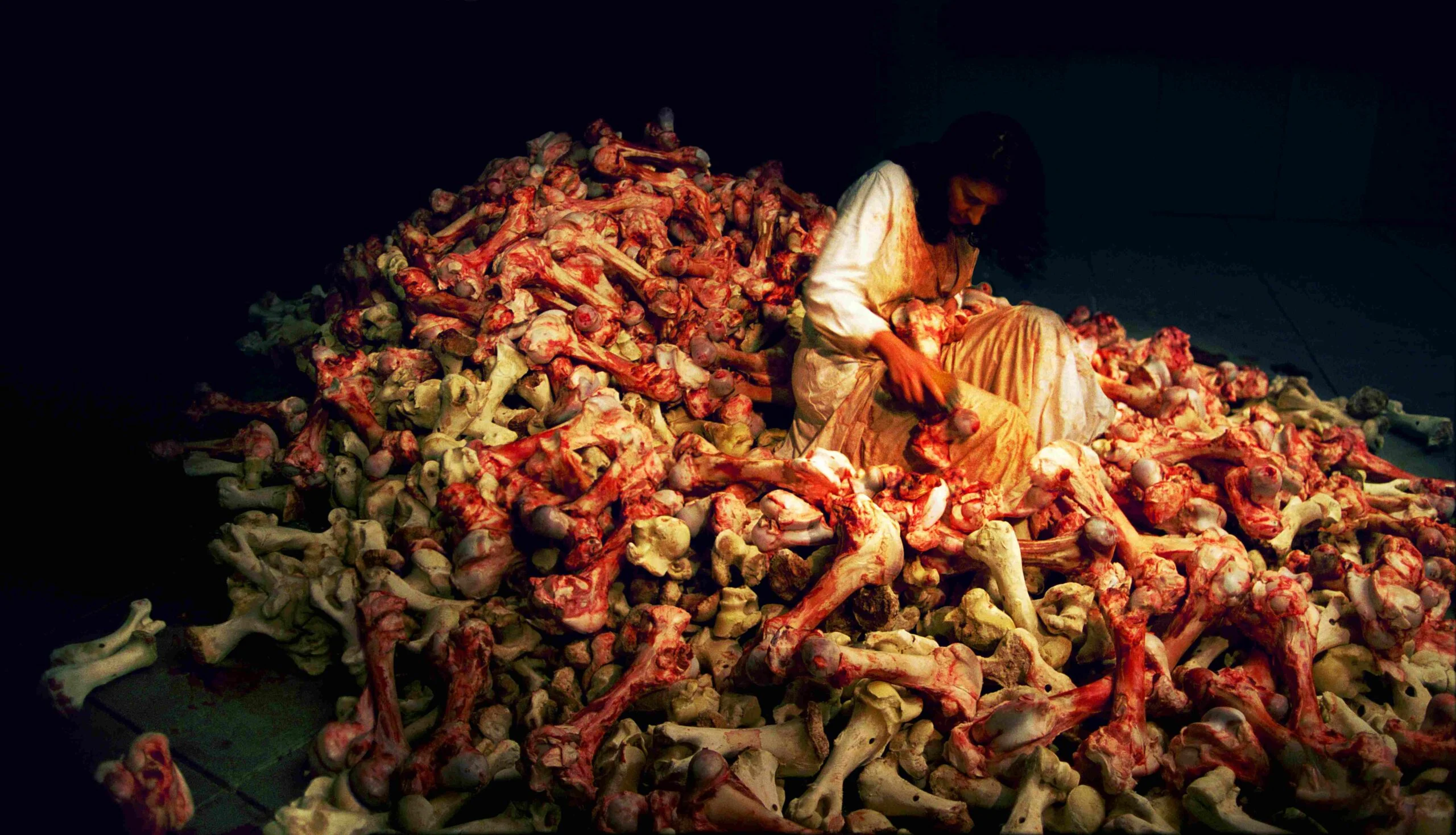
Exploring the Body and Mind
Marina Abramović’s relationship with her body as a medium of expression has deep roots that trace back to the early days of her artistic career in former Yugoslavia. Abramović’s work has always been characterized by a profound immersion into the physical and psychological boundaries of the human being, using pain, endurance, and resilience as tools to explore new dimensions of human experience and expression.
Starting in the 1970s, Abramović began experimenting with performances that required extreme physical commitment and mental resilience, pushing her body to the limits of endurance and beyond. These performances not only tested her stamina but also sought to convey to the audience the transformative potential of pain and suffering. Abramović’s art thus becomes a tool for inner exploration, a way to probe issues of identity, connection, and our understanding of physical and spiritual reality.
During her formative years in Amsterdam, Abramović continued to develop her unique approach to performance art. It was during this time that she created some of her most impactful and provocative works. For instance, in the performance “Rhythm 10,” she used a series of throwing knives to explore themes of chance, fate, and body control under extreme risk.
Abramović’s performances in Amsterdam often involved the audience in new and unexpected ways, challenging spectators to reflect on their relationship with the artist and the artwork. This period was crucial in defining her style, marked by a strong emotional charge and a continuous search for authentic interaction with the audience, who become an integral part of the artwork itself.
Abramović’s connection with Amsterdam continued to influence her art, providing her with a culturally rich environment and the freedom to experiment. Her work during these years laid the groundwork for later phases of her career, in which she delved deeper into themes of the body, the spirit, and their mutual relationship in artistic creation. This chapter of her life not only enriched her expressive language but also solidified her reputation as one of the most daring and innovative figures in the contemporary art world.
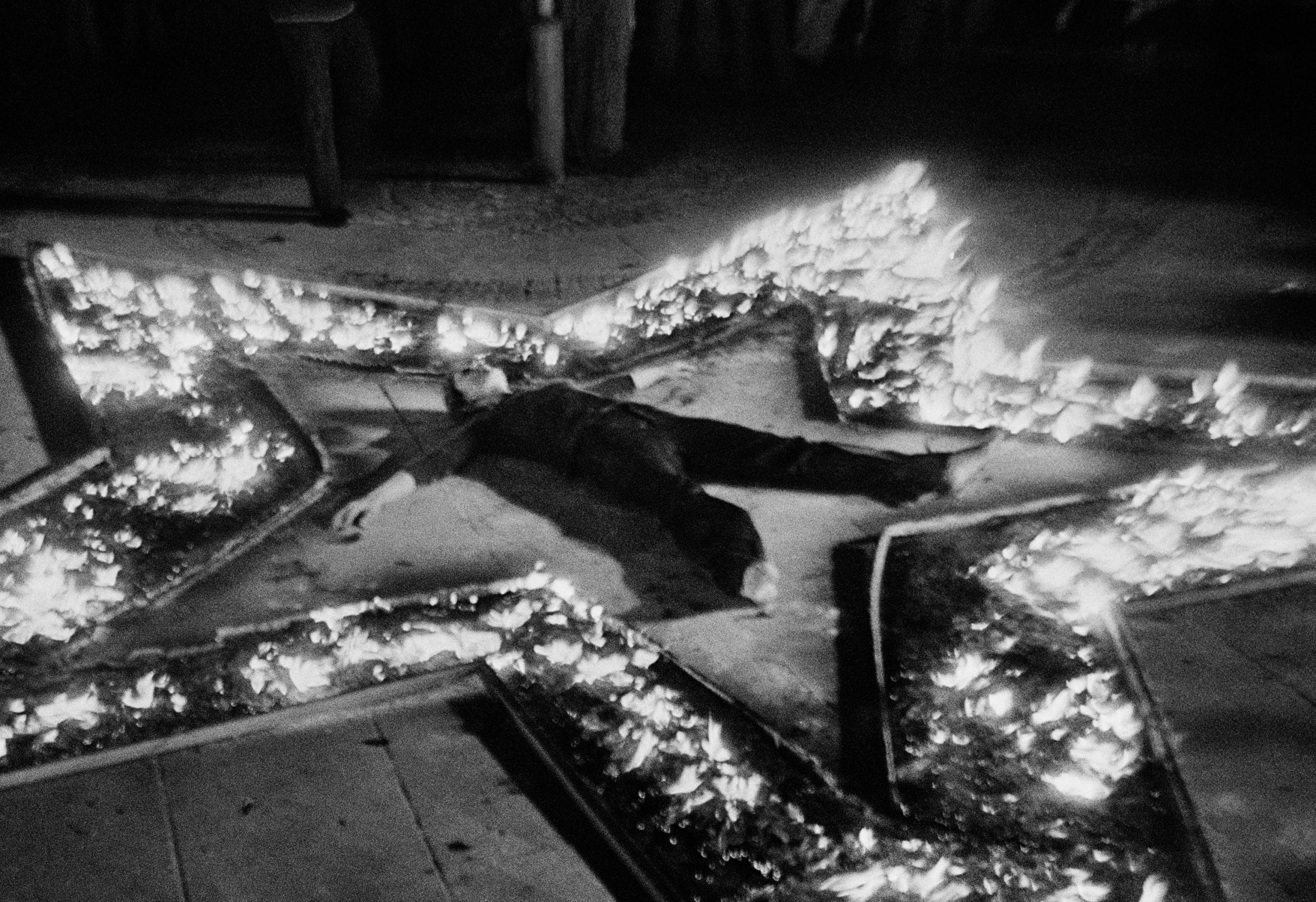
Collaborations
The period of collaboration between Marina Abramović and the artist Ulay marked a crucial and transformative phase in her career. Together, they explored and pushed the boundaries of performance art, experimenting with new ways to explore the relationship between artists and the audience, as well as between the artists themselves. These collaborations, which took place between the late 1970s and early 1980s, were fundamental for the development of both artists and left an indelible mark in the field of contemporary art.
One of their earliest and most famous performances, “Relation in Time” (1977), featured Abramović and Ulay bound together by their hair, sitting back-to-back for 17 hours. This performance explored themes of dependency, connection, and physical and emotional endurance, demonstrating how the body can become a powerful medium to express and experience abstract and deeply personal concepts.
The work “Imponderabilia” (1977), also performed during this period, further explored the dynamics of human relationships. The two artists positioned themselves naked opposite each other in a narrow doorway, forcing museum visitors to pass between them and choose whom to face and whose body to turn towards. This performance not only broke physical and social taboos but also invited the audience to actively participate and confront their own inhibitions and physical comfort.
“Rest Energy” (1980), another notable performance, saw Abramović and Ulay holding a tense bow, with the arrow pointed directly at Abramović’s heart. This physical and emotional tension explored themes of trust, vulnerability, and risk in a way that few other art forms could communicate.
During their period of collaboration, Marina Abramović and Ulay not only explored the dynamics of interpersonal relationships but also laid the foundation for a new language in performance art that deeply integrated the personal and the performative. Their joint practice frequently highlighted themes of duality and contrast—masculine versus feminine, strength versus vulnerability, movement versus stasis—seeking to dissolve these dichotomies to reveal a new synthesis emerging from their interaction.
One of the emotional and symbolic peaks of their collaboration was “The Lovers: The Great Wall Walk” (1988), where Abramović and Ulay started walking from opposite ends of the Great Wall of China, meeting in the middle after three months. This performance not only marked the culmination of their artistic relationship but also symbolized the end of their personal relationship. The intensity of this separation, experienced and shared through an art piece, highlighted the profound interconnection between the artists’ personal lives and their artistic expression. This dramatic fusion of life and art in their work demonstrated their commitment to pushing the boundaries of what performance could communicate, making their collaborative period a seminal era in the history of modern art.
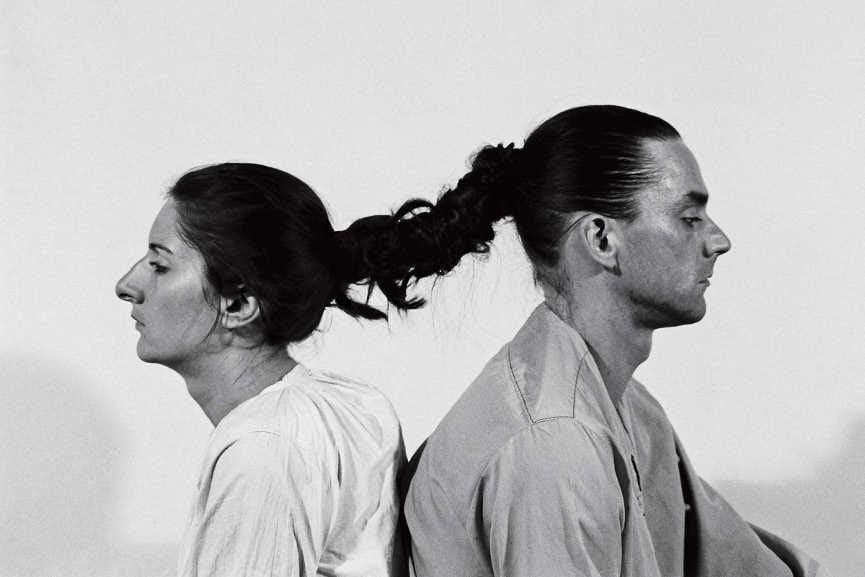
The Role of the Audience in Abramović’s Art
Marina Abramović has always emphasized the crucial role of the audience in her performances, treating spectators not merely as passive witnesses but as active participants, essential to completing the artwork. Her artistic explorations aim to create a direct dialogue between the artist and the audience, a dynamic that transforms each performance into a unique and unrepeatable event.
A quintessential example of this interaction is the performance “Rhythm 0” (1974), one of the most radical and discussed in Abramović’s career. During this piece, the artist remained motionless, at the disposal of the audience, beside a table on which 72 objects were laid out that could be used on her at will. The objects ranged from a feather and a bouquet of roses to a sharp knife and a loaded gun. This performance highlighted the audience’s ability to transform from passive spectator to active, potentially dangerous agent, exploring the boundaries between trust, violence, and responsibility.
More recently, “The Artist is Present” (2010), held at MoMA in New York, featured Abramović sitting silently for three months, making eye contact with visitors who sat one at a time across from her. This intense exploration of eye contact as a form of non-verbal communication heightened the art’s ability to create profound and meaningful connections, highlighting the power of silence and physical presence. The performance became a cultural phenomenon, drawing thousands of participants and becoming a moment of intimate reflection for many. Each visual encounter transformed into a charged emotional experience, reflecting human vulnerability and the quest for authentic connection.
This type of interaction has shown how the audience is fundamental to the realization of the artwork in the context of performance. Abramović uses the presence and reactions of participants to catalyze and guide the emotional energy of the performance, making the audience co-creators of the work. This approach raises significant questions about the role of art and how it can influence and transform viewers, not just aesthetically but also on a personal and spiritual level.
Abramović’s ability to engage the audience also extends to her more recent works that invite active participation. For example, in the “Abramović Method,” spectators are invited to participate in exercises of mindfulness and presence, such as “Counting the Rice,” which requires concentration and dedication, transforming each participant into an active practitioner of the art.
In all these works, Abramović leverages the presence of the audience to challenge the traditional perception of art as something to be passively observed. Instead, she invites viewers to immerse themselves in the artistic experience, becoming an integral part of the creative expression. Her work demonstrates that art can be a powerful medium for personal and collective transformation, and that the audience, with its presence and participation, plays a crucial role in this process.
Through these interactions, Abramović has not only renewed the way art is experienced but also redefined the concept of performance, establishing a new paradigm for contemporary art that centers on the shared human experience.
fakewhale
Founded in 2021, Fakewhale advocates the digital art market's evolution. Viewing NFT technology as a container for art, and leveraging the expansive scope of digital culture, Fakewhale strives to shape a new ecosystem in which art and technology become the starting point, rather than the final destination.
You may also like
Unveiling Identities: The Cinematic Reimagination of Brice Dellsperger
Entering the “Jalousies” exhibition by Brice Dellsperger at the Dortmunder Kunstverein,
Curator Spotlight #5: Cao Shu
In this fourth chapter of our Curator Spotlight series, we continue our journey through the evolving
LAN Party in Conversation with Fakewhale
LAN Party is a networked curatorial & research duo based in Paris, Tokyo, and online. Founded by

